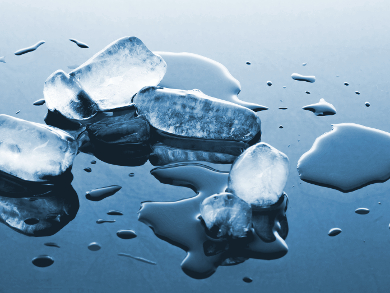The pressure-induced melting of ice has been discussed as the cause of effects such as glaciers moving and ice skates gliding. The “slipperiness” of ice skates must be attributed to other causes, since far higher pressures are required to melt the ice. The pressures under glaciers, in contrast, are sufficiently high to lower the melting point of water. However, it has been difficult to experimentally demonstrate this effect, because high pressures are difficult to access and cannot easily be decoupled from other effects such as friction and heat fluctuations.
Kai Sotthewes, Pantelis Bampoulis, University of Twente, Enschede, The Netherlands, and colleagues have developed an experiment that allowed them to observe the microscopic behavior of ice layers under external pressure for the first time. The team enclosed a two-dimensional layer of ice between a graphene coating and a mica substrate. This setup isolates the ice from thermal fluctuations and traps water molecules on the surface. The researchers then used an atomic force microscopy (AFM) tip to provide an image of the ice/water system and to induce high pressures.
The team observed localized melting of the ice into a quasi-liquid phase directly under the AFM tip at pressures above 6 GPa (at room temperature). According to the researchers, high pressure causes a loss of order in the ice network, which allows the molecules to move more freely. The process is reversible and the water freezes again when the pressure is lowered.
- Pressure-Induced Melting of Confined Ice,
Kai Sotthewes, Pantelis Bampoulis, Harold J. W. Zandvliet, Detlef Lohse, Bene Poelsema,
ACS Nano 2017.
DOI: 10.1021/acsnano.7b07472




